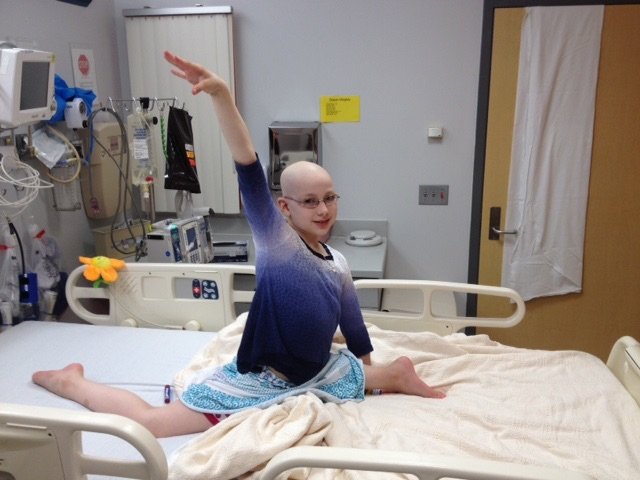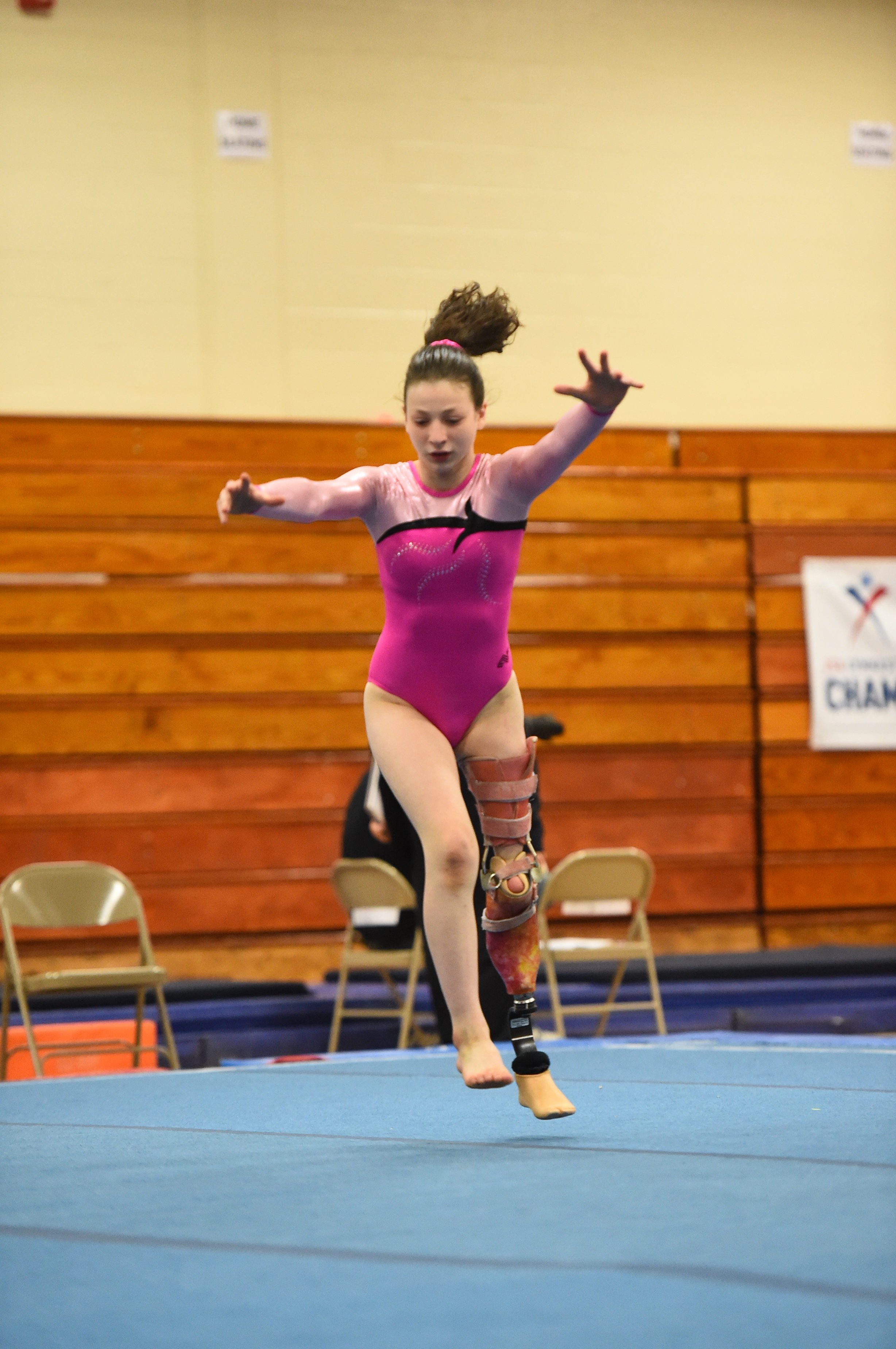THE STORY OF GYMNAST, NURSING STUDENT & NOW RUNNER
Maya Oberstein
A Gymnast Since Childhood
Maya Oberstein is a 21-year-old nursing student at Northeastern University.
She started gymnastics when she was four years old. She says, “I just always loved the feeling that it gave me it’s this feeling of complete freedom. So I competed from age five onwards.”
Osteosarcoma Diagnosis
Many think the rotationplasty procedure is new but it was actually developed in the 1920s originally to treat complications of tuberculosis. Rotationplasty works by cutting out the knee and then raising the lower leg, rotating it 180 degrees, and reattaching it. The tibia is being attached to the femur with the heel of the foot located where the knee cap used to be.
The nerves and blood vessels are not cut at all; they are carefully resected and coiled and sewn in under the skin. At this point the ankle, after significant retraining of the brain, acts as the knee and this means the person is a below knee not an above knee amputee.
Having a knee makes a huge difference in what the individual can do, how well they walk, and what sports they can do or do much better. As you can imagine, retraining the brain is no small feat and it is only possible in a human of 15 years of age or younger. The retraining process takes about a year.
At nine years old she was diagnosed with osteosarcoma and lost her leg. But as this was happening, every single decision throughout her treatment was based on this idea of Maya making a return to gymnastics. One such decision was to salvage her lower leg and foot through a procedure called a rotationplasty.
Active again
After the procedure, healing, and retraining her brain, Maya returned to gymnastics at age 11 and competed until she was 16. She loves it but stopped then because it became hard on her body and her prosthesis hurt all the time.
Maya’s dream now is “I just want to be able to be active and there’s a lot of things I’ve wanted to get involved with that require running even just playing basketball soccer et cetera that I haven’t been able to do I feel because my prosthetic sockets tend to be too loose to allow that. There’s just so much movement and my limbs have always been very vulnerable to that friction and that movement that the force that it puts on it just doesn’t doesn’t allow me to do these active things for that long.”
The Drive to Run
Maya says, “my whole struggle throughout my childhood was I was growing so much and my leg was just constantly changing. We were looking at options but some of these grants are very hard to get and it led my parents to conclude we’ll wait until you’re fully grown and then see if you still want want to be active that level.”
She says, “I have done running with my current leg. I kind of know how to run ok but I can’t tolerate it.”
Once she is fully healed and Bob Emerson of A Step Ahead Prosthetics (WSICF’s prosthetics partner) says she’s ready for a running socket-blade fitting we will move forward.









